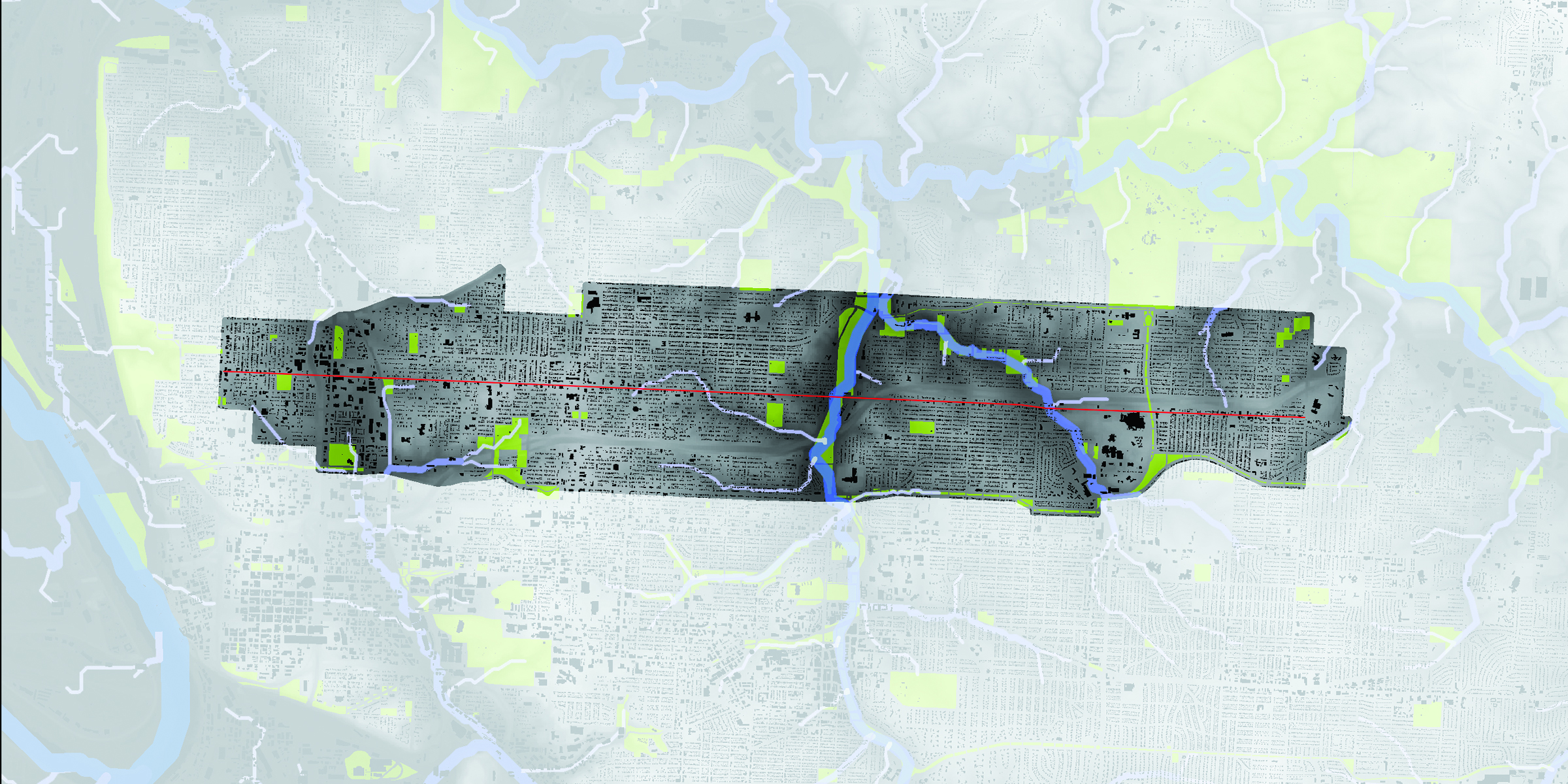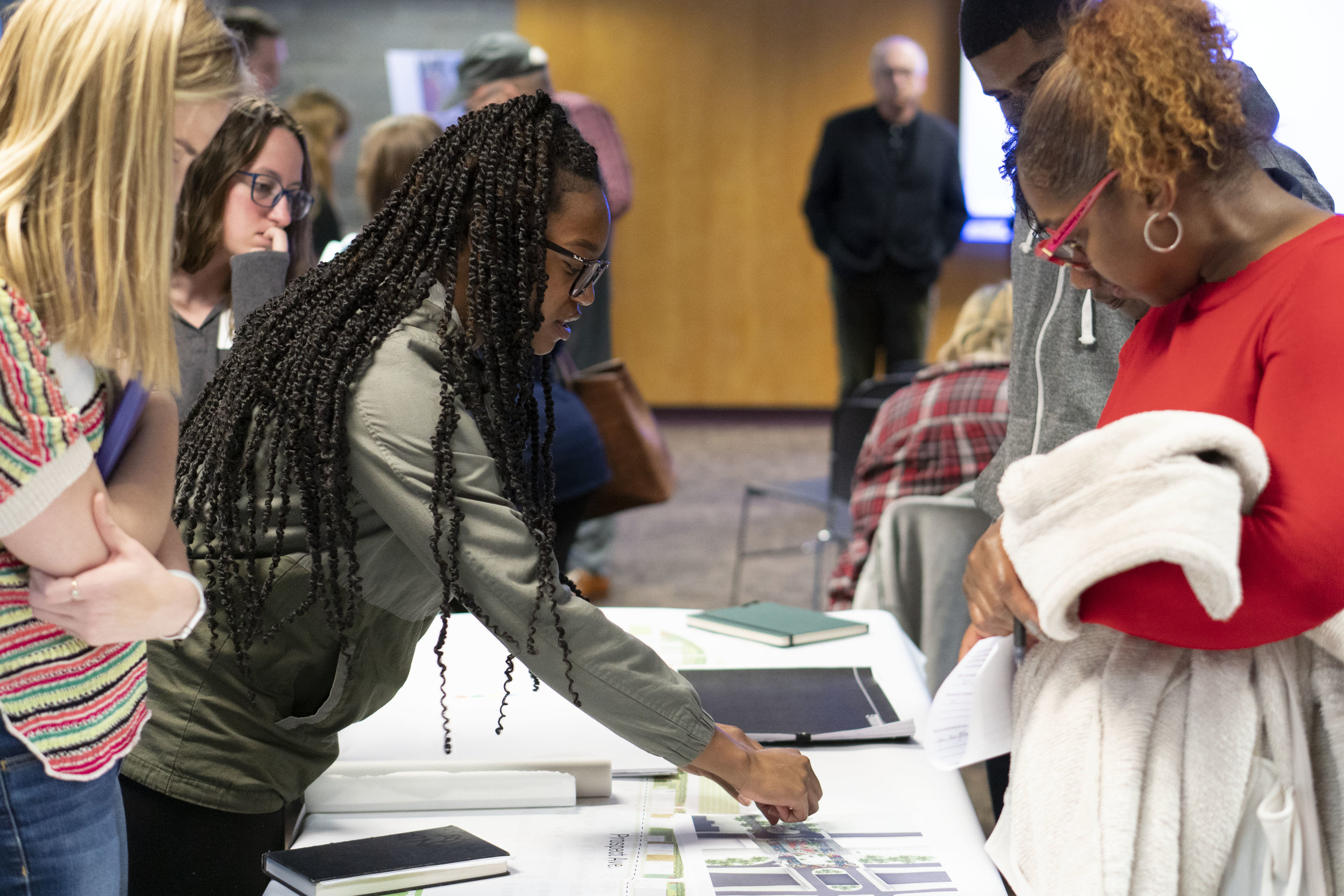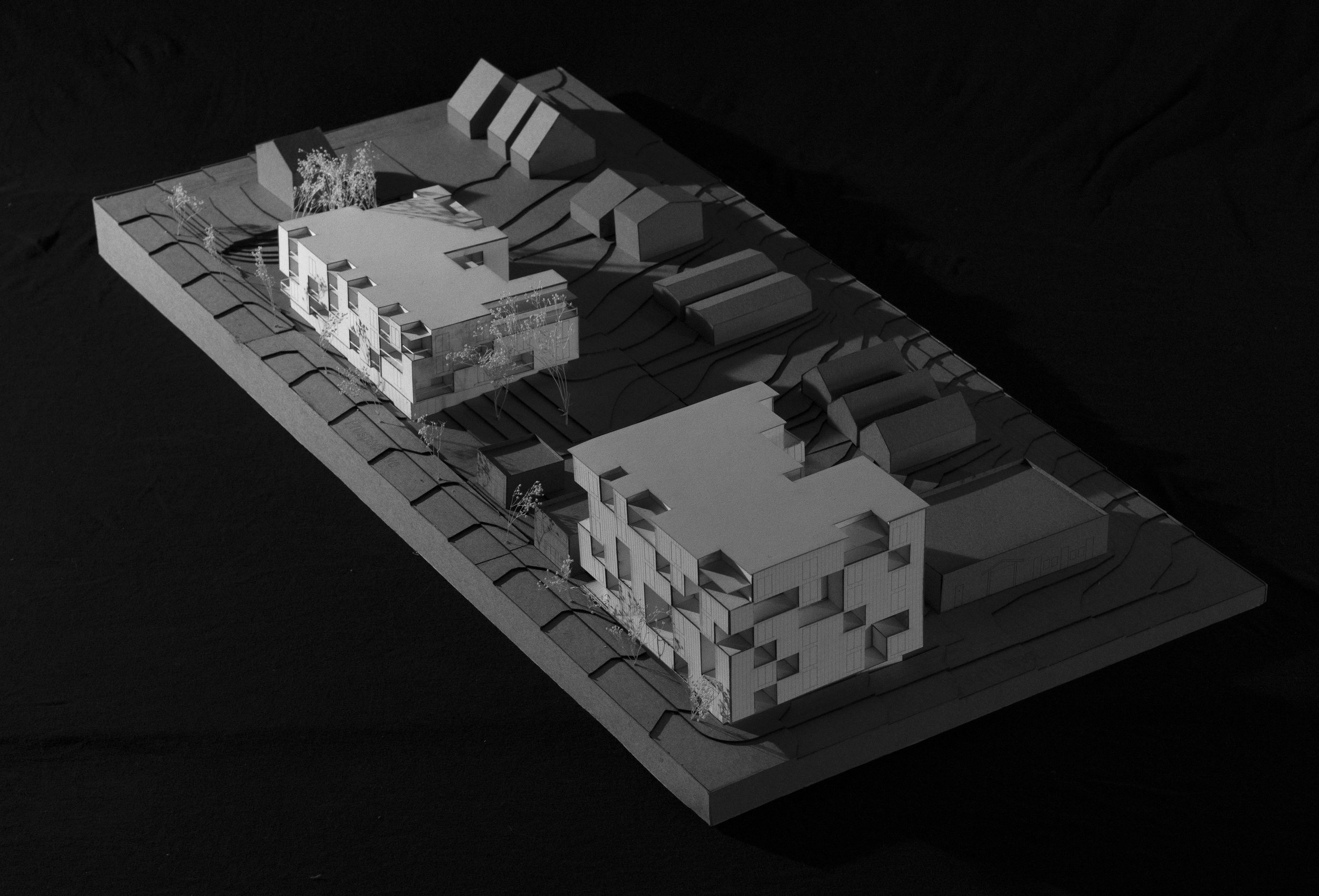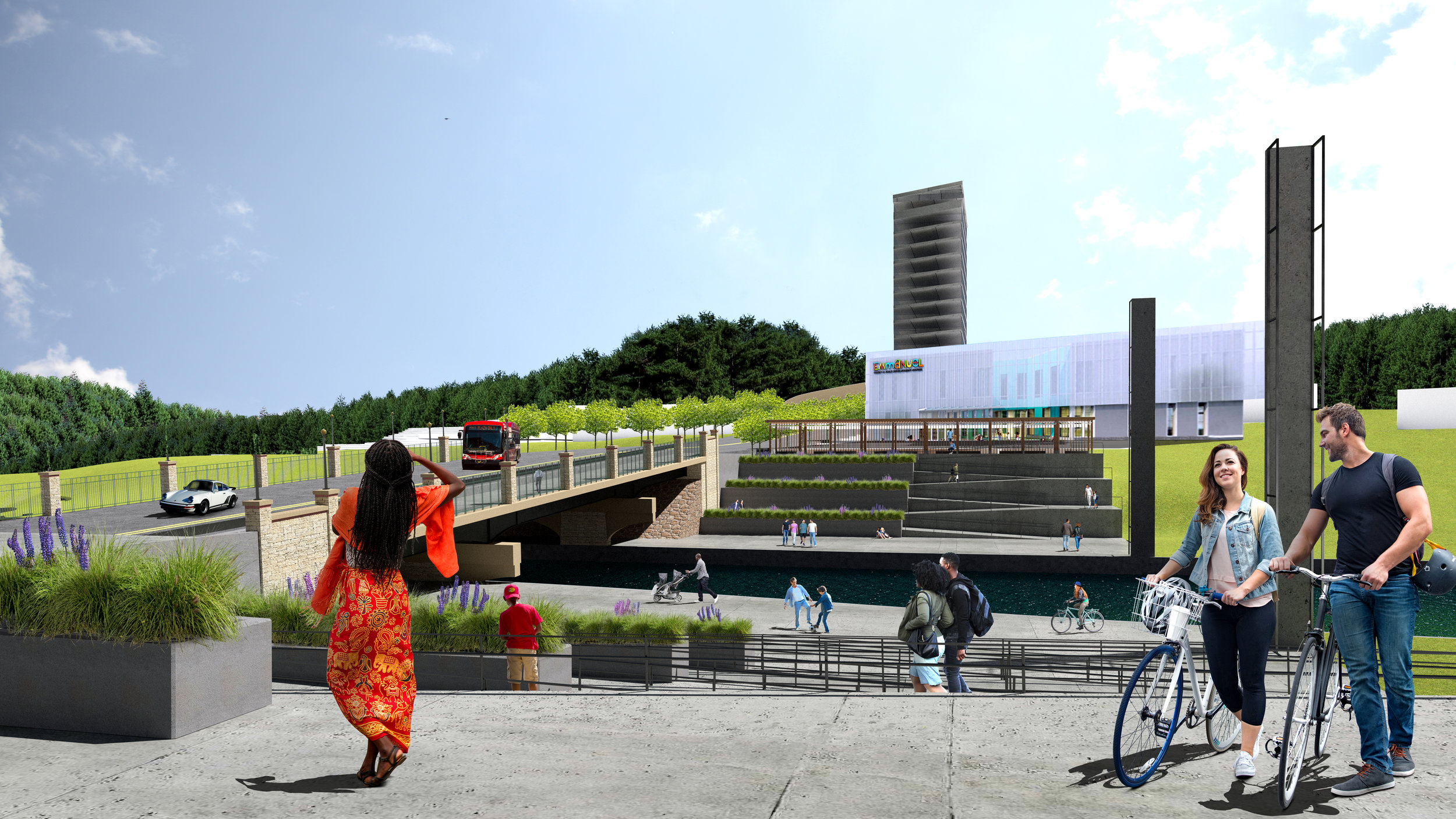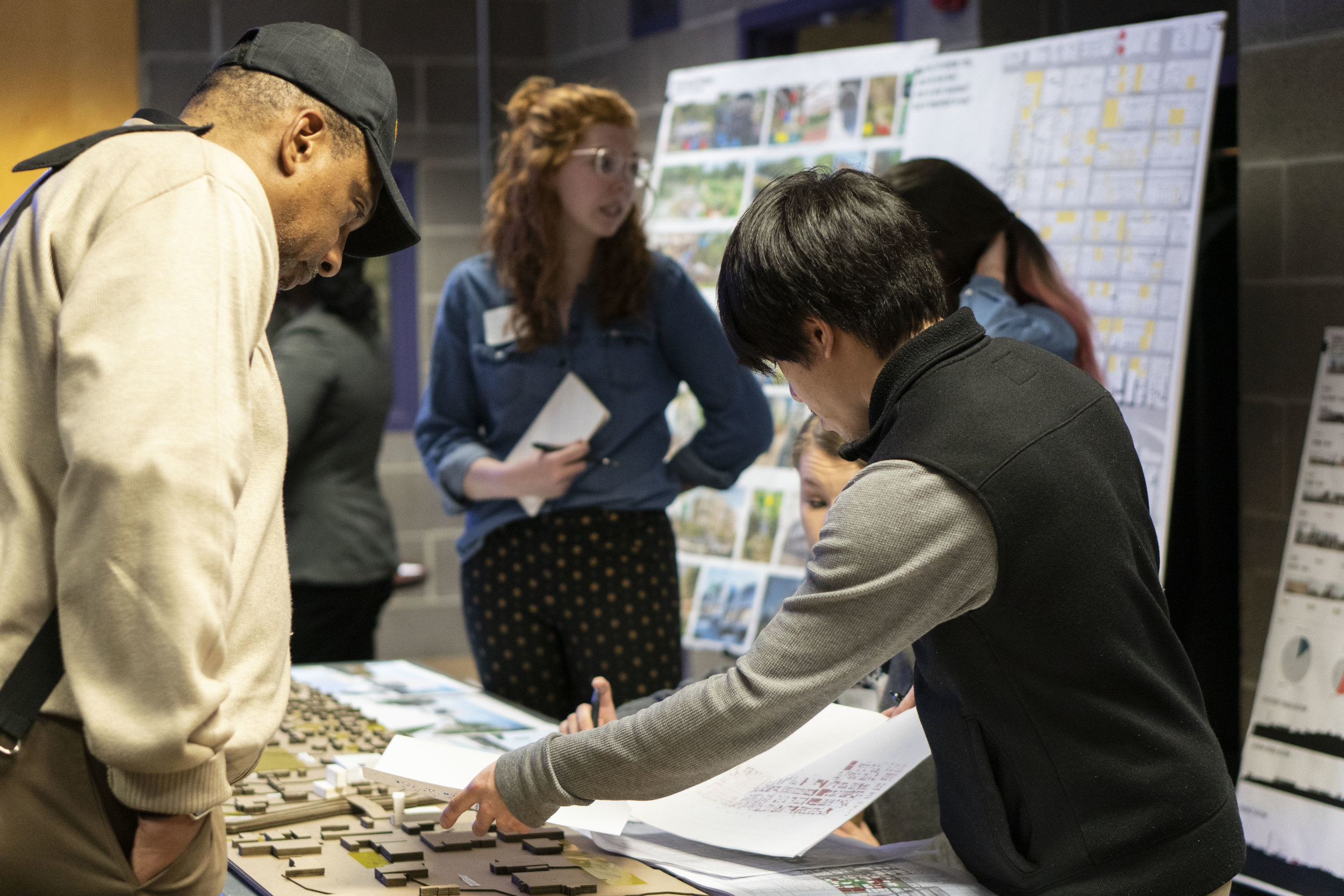How can small-scale interventions help unify an urban corridor?
2018-19 | Prospect Avenue Nodal Study
Prospect Avenue is a significant and defining element of Kansas City’s urban structure. The ongoing transit-oriented development initiatives (generated by the City and the planning community), growing investment in public transportation, and community interest in quality of life improvements make Prospect Ave. one of the more dynamically changing parts of Kansas City. With all the potential and anticipated change, there is an escalating need for a comprehensive urban design perspective that looks at the entire length of Prospect Ave. (from Independence Ave. on the North to the 75th St. on the South) and attempts to create an integrated vision for the area.
To that end, the KCDC collaborated with the City of Kansas City, MO Planning Department to generate a visioning study for the Prospect Corridor. The study focused on defining potential urban nodes along Prospect Ave, setting design strategies and investigations for their development that utilize catalytic elements which will encourage urban change and improvement. This process will took place in three phases over the 2018/19 academic year:
Verification of an operational urban design concept for Prospect Ave
A strategic segmented study and urban visioning design
Focused urban design nodal studies
The KCDC studio strategically selected four areas (termed ‘nodes’) to investigate. Those nodes are: Independence- 18th Street; 27th-41st Street; Brush Creek, and 63rd-75th Street. The goals of this project are to test and propose a design platform that addresses the following: cultural identity development, safety and security, diverse, affordable, and quality housing, economic opportunity, environmental quality, alternative transit-oriented design strategies, and reintegration of the corridor into the greater KC area. As the students identified the key issues and existing conditions in the study area, the KCDC assembled community leaders to help organize a series of public meetings throughout the semester to gain insight on the concerns of those living and working in each node. With this guidance the students completed their comprehensive nodal studies in the KCDC Open House at the end of the semester. Currently, the project publication planning is underway throughout the summer and once complete, the digital version will be linked to our website for the public to view.
As the project was developed, the KCDC urban design studio interacted and collaborated with the project stakeholders and community members through project reviews, design charrettes, and public presentations seeking and incorporating their input. Additionally, the KCDC took into consideration all related City planning documents and ongoing initiatives, as well as drew on related KCDC projects such as the recently completed 2017-2018 Neighborhood Prospects: Sustainable Communities by Design study, the 2016-17 Scarritt Renaissance Neighborhood Urban Vision Study and 2012-2013 Reintegrating Independence Avenue Urban Vision study.
In addition to collaborating with project stakeholders and community members, the KCDC is also sought guidance from a Project Advisory Committee that is comprised of professional, community, and civic leaders. This committee includes: Jeffery Williams, Director of City Planning and Development, City of KCMO; Kate Bender, Deputy Performance Officer, City of KCMO; Angela Eley, AICP, Lead Planner, City Planning and Development; Brien Starner, Vice President, Regional Community & Economic Development, KCATA; Beth Edson, Branch Manager, KC Public Library; and Kyle Elliott, AICP, Division Manager, City Planning and Development.



